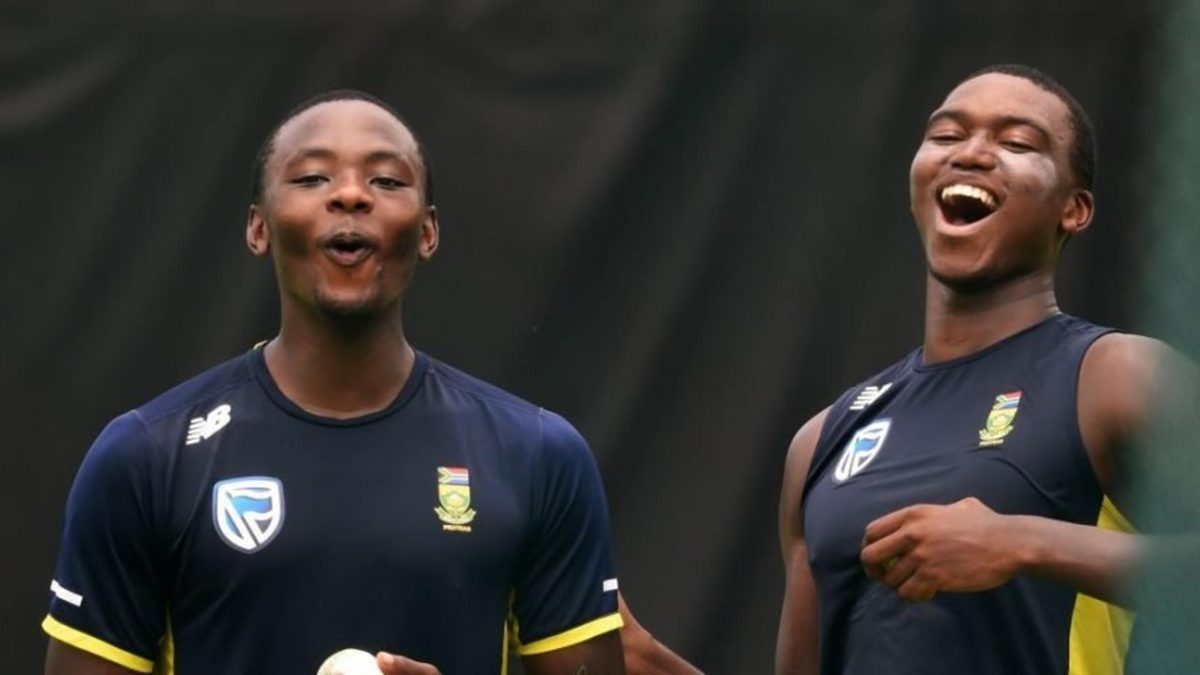
Previous England tours of South Africa have been dominated by pace bowlers and this one is likely to be no different, writes Daniel Gallan.
The enduring memory of England’s last visit to South Africa is that of Stuart Broad having one of those spells. At the Wanderers in mid-January in 2016, Broad removed five of South Africa’s top six, including captain AB de Villiers for a five-ball duck, in the space of nine overs.
When he had Faf du Plessis brilliantly caught and bowled at the start of the 34th over, the game was gone. The Proteas were bundled out for 83, Broad ended the innings with 6-17 from 12.1 overs, and England cantered to a seven wicket win and with it bagged the Basil D’Oliviera trophy.
Contests between these nations on African soil are defined by bowlers. Mike Atherton’s famous rearguard in 1995, which saw him bat for over 10 hours to score an unbeaten 185 in Johannesburg, partially carries significance because of the thunderbolts that Allan “White Lightning” Donald was hurling down from the other end.
Since South Africa were reintroduced to international cricket in 1991, England have toured here five times and played 23 Tests. In that time the top 10 wicket-takers have unsurprisingly been seam bowlers. The top five – Shaun Pollock (56 wickets at 22.78), Donald (41 at 22.41), Morné Morkel (34 at 25.11), Broad (31 at 26) and Andrew Flintoff (28 at 27.28) – are all bowlers capable of digging one in short and rushing the batter. On helpful wickets, all five of the above bowlers took wickets for fewer runs compared to their career average.
[caption id=”attachment_132351″ align=”alignnone” width=”800″] Previous England tours of South Africa have been dominated by pace bowlers[/caption]
Previous England tours of South Africa have been dominated by pace bowlers[/caption]
Seam friendly surfaces are expected throughout the summer and Vernon Philander’s record at home – 138 wickets at 18.65 from 32 matches – shows that there is room for the bowler who trundles to the crease and delivers the ball on a probing length, but when the African sun is out and the Kookaburra is refusing to bend, there is no substitute for pace.
Ordinarily, this would not bother South Africans whose muscular approach to the sport has always seen them win the arms race against their more genteel English adversaries.
Of course, that is no longer the case as Jofra Archer’s inclusion (should he recover in time for the first Test) changes the dynamics of the England attack.
[breakout id=”0″][/breakout]
South African fans will remember the blow he inflicted on Hashim Amla in the opening match of the World Cup and no doubt Joe Root will look to unleash his premier spearhead whenever he can.
Du Plessis will want to do the same with Kagiso Rabada, who claimed 7-112 and 6-32 the last time England were in Centurion. The challenge both skippers face is resisting the temptation to toss their main strike bowlers the ball when they are not revving at full capacity.
Writing for The Cricketer, former England seamer Mike Selvey wrote that Archer is a thoroughbred and not a workhorse and that South Africa treat Rabada like a thoroughbred. That is not entirely true as insiders within the Proteas camp have long raised concerns over Rabada’s dip in intensity over the past year as a result of bowling too many overs at his relatively young age of 24.
Unlike Archer, or indeed other rival quicks, Rabada had a disappointing World Cup by his standards. Down on pace and lacking his usual bite, he rarely bothered the batters at the other end. His display against Bangladesh at the Oval in a 21-run defeat – which ultimately proved decisive in South Africa’s campaign – encapsulated his lack of energy with one inept half tracker after another disdainfully swatted away by Shakib Al Hasan and co.
Rabada has promised to raise his intensity for this series. All the South Africans have. The word intensity has become such a mantra for both players and coaches that one must assume they have it scrawled above their beds so that it is the last thing they see before they close their eyes at night.
The promise of increased intensity suggests that South Africa will use Rabada and Anrich Nortje (until Lungi Ngidi has recovered from a hamstring injury) sparingly. Both quicks will be on rotation and utilised in a shock and awe approach with Philander looking to make inroads with the new ball.
This puts greater emphasis on Keshav Maharaj’s left-arm spin. The 29-year-old has skirted under the radar in the build-up to Boxing Day but his presence adds an extra dimension to the Proteas attack and arguably gives du Plessis an advantage over Root.
[breakout id=”1″][/breakout]
Since he made his debut in November 2016, Maharaj has taken 100 Test wickets at 31.88 while travelling at 3.3 runs per over. Only Nathan Lyon, Ravi Aswhin and Ravi Jadeja have taken more wickets bowling spin in this time.
England have less faith in their spinners. They fielded a spinner-less attack for the first time in seven years in the recent Hamilton Test and could once more field an all-pace attack at Centurion. That South Africa hold an advantage in the spin stakes is a remarkable turnaround for a nation that once regarded the slow turning ball as an affront to the sport.
There is a misconception that opening the batting in South Africa is more difficult than anywhere in the world. Since England’s last visit in 2016, the first wicket here has averaged 34.29 compared to the world average of 31.81. What the numbers do reveal is that batting on South Africa’s tricky surfaces does not get easier. Every other wicket wields fewer runs compared to the world average with the fifth wicket significantly lower – 26.55 compared to 39.25.
Do not expect five days of attrition. The anomaly of Cape Town in 2016 – which saw Ben Stokes bludgeon the fastest ever 250, Amla reach a double and Temba Bavuma become the first black South African to raise his bat as a centurion – is unlikely to be repeated.
Brittle batting units, especially at the top of the order, are there for the taking. This will be a series won or lost by the gunslingers.








